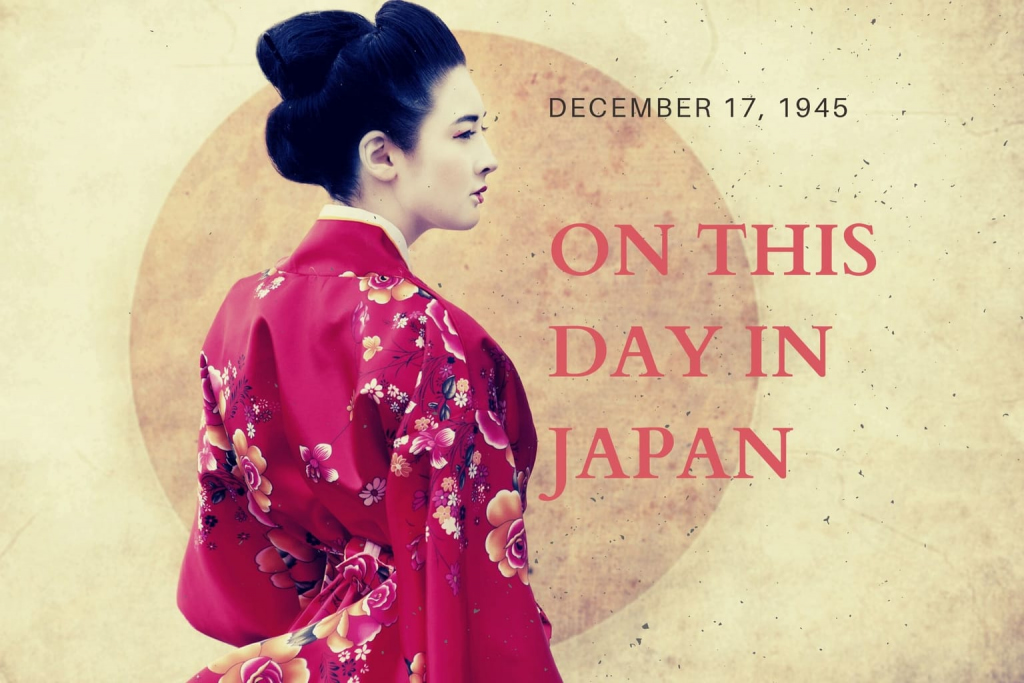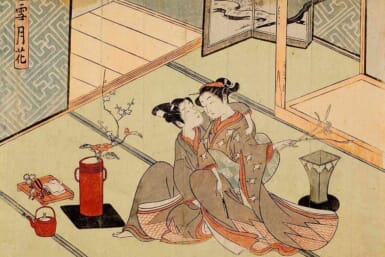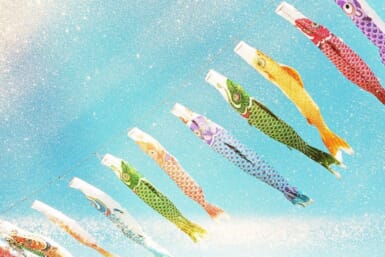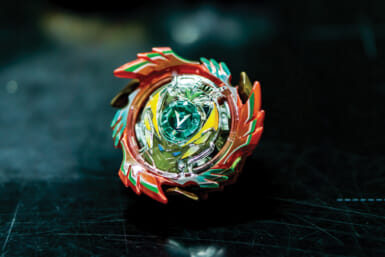On December 17, 1945, 75 years ago, the General Election Law was revised in Japan, granting suffrage to women in Japan for the first time in history. Simultaneously, the voting age was lowered from 25 to 20.
Calls for democratic reform in the Potsdam Declaration, signed five months earlier, undoubtedly accelerated the momentous decision. However, it was the groundwork done by feminists such as Hideko Fukuda, Raicho Hiratsuka, Fusae Ichikawa and Mumeo Oku that set the wheels in motion decades earlier.
Women of the World and Bluestocking
“When I look at the conditions currently prevailing in society, I see that as far as females are concerned, virtually everything is coercive and oppressive, making it imperative that we women rise up and forcefully develop our own social movement,” wrote Fukuda in the first edition of Sekai Fujin (Women of the World), a socialist women’s newspaper she established in 1907 with anarcho-syndicalist Sanshiro Ishikawa.
Set out to advance the cause of women’s emancipation and the procurement of political freedom, its content, written by both males and females, scared the government who imposed several fines on the publication for disturbing public order.
Released four years later, Seito (Bluestocking), written purely for, by and about women, had an even more significant impact. Hiratsuka, the most influential of the five founders, kicked off the first publication with the words, “In the beginning woman was the sun. An authentic person. Now she’s the moon, a wan and sickly moon, dependent on another, reflecting another’s brilliance.”
Named after the Blue Stockings Society, a social and educational movement for females in mid-18th century England, the popular magazine covered a wide range of topics including rape, arranged marriages, chastity, abortion and prostitution, as well as works by famed feminists such as the pioneering poet Akiko Yosano and novelist Nobuko Yoshiya.
Opposed to the notion that all females should adhere to Masanao Nakamura’s concept of the ideal woman known as “ryosai kenbo” (“Good wife, wise mother”), contributors of the magazine were proud to be called “atarashii onna” (“modern women”).
The mainstream media, however, used the term in a disparaging way. They berated members of the publication, latching on to what they considered scandalous events in their personal lives. This simply added to the buzz surrounding the magazine. At its height, in 1915, under the editorship of Noe Ito, it was selling around 3,000 copies a month. A year later, it folded after the government threatened to fine any distributors that carried it.
Article Five and The New Women’s Association
The closure of Seito was a blow, but for Hiratsuka the battle had only just begun. A visit to a textile mill in Nagoya in 1919 underlined to her how poorly females were treated in Japan and she felt the only way to change the situation was for women to participate in the political process. At the time, though, that was impossible due to Article Five of the Public Police Law, which prohibited them from involvement in political parties and rallies.
Hirakawa, along with Ichikawa and Oku subsequently established Shin Fujin Kyokai (the New Women’s Association) in 1920, an organization with the aim of enhancing women’s rights in the areas of education, employment and suffrage. Gathering at Hirakawa’s residence on January 6 of that year, the three ladies drafted two petitions. One called for males to submit to syphilis testing before getting married. The other demanded the repeal of Article Five. The next year they added a demand for women’s suffrage.
“If women do not have a place to discuss policies they want to see enacted, Japan’s democracy cannot help but be biased.”
Ichikawa left the organization in 1921, departing for America. In her absence, the NWA continued to fight for reform with Oku lobbying conservative aristocrats in the House of Peers while carrying her baby on her back. Their most significant victory came shortly before the group disbanded in 1922 as amendments were made to Article Five. Women were still banned from joining political parties, but they were now allowed to attend rallies. Though not exactly what they were hoping for, it was a step in the right direction.
Inspired by American suffragists like Carrie Chapman Catt and Alice Paul, Ichikawa returned from the States with renewed vigor and a growing belief that women could get the vote in her homeland. She subsequently formed the Women’s Suffrage League with Ochimi Kubishiro in 1924.
The General Election Law and the Rise of Militaristic Nationalism
The following year, the General Election Law passed granting suffrage to all men over 25. Ichikawa saw this as an excellent opportunity to advance their own cause. Campaigning for male candidates who supported women’s rights, their influence grew. The late-1920s and early 1930s became known as the “period of hope,” in their push for reform.
The closest women came to getting the vote in the interwar years was in 1931 when prime minister Osachi Hamaguchi sponsored a bill that would have granted suffrage to females in city, town and village elections, but not national ones. It would have also allowed them to hold office with the consent of their husbands. Despite being passed in the Lower House, it was defeated in the House of Peers by a vote of 184 to 62.
That same year, the universal suffrage movement started to lose its momentum in Japan following the country’s invasion of Manchuria. The rise of militarism meant that freedom of expression was increasingly suppressed. Many feminist and leftist groups, who’d previously been staunchly anti-government, threw their support behind the nationalist cause. They set aside their demand for the vote and focused more on other female causes.
The Potsdam Declaration and Weeds’ Girls
On July 26, 1945, China, the United States and Great Britain released the terms for Japan’s surrender and reconstruction at the end of WWII through the Potsdam Declaration, warning that there would be “no deviation, no alternatives and no delay.” Paragraph 10, which read: “The Japanese Government shall remove all obstacles to the revival and strengthening of democratic tendencies among the Japanese people,” suggested changes to the electoral system would be forthcoming.
“In the beginning woman was the sun. Now she’s the moon, a wan and sickly moon, dependent on another, reflecting another’s brilliance.”
General Douglas MacArthur, the Supreme Commander for the Allied Powers (SCAP), was determined to empower women in Japan, believing they would likely support the American agenda. He put lieutenant Ethal Weed in charge of the Civil Information and Education Women’s Affairs Program and she, in turn, recruited a cadre of renowned feminist leaders, including birth control activist Shidzue Kato and female education pioneer, Hani Motoko. Collectively known as Weeds’ Girls, they worked tirelessly to promote equal rights for females throughout the country.
On December 17, 1945, the Japanese government finally amended its legal code giving women the vote for the first time. Ichikawa, however, was keen to stress that suffrage hadn’t simply been handed to them by MacArthur. Speaking to Lindesay Parrott in the New York Times, she said that they “would have been granted (the vote) within a few years even if Japan had won the war,” adding that females had “acquired a new form of self-respect,” during the conflict.
Universal Suffrage and a Lack of Political Representation
The first General Election in the post-war years, which took place on April 1, 1946, saw 67 percent of eligible females turn out to vote while 39 won seats in the house of representatives. It was a momentous occasion, but it would take another 59 years before that latter number was beaten, with 43 women elected to the Lower House in 2005. Today, despite former prime minister Shinzo Abe’s vow in 2013 “to build a society where women could shine,” females are still massively under-represented in parliament.
In 2018, Abe appointed just one woman, Satsuki Katayama, to his Cabinet, stating that she could do the job of “two or three women.” Things are unlikely to get much better under the leadership of new prime minister Yoshihide Suga. He hardly mentioned gender equality during his leadership campaign and then appointed just two females to his 21-member Cabinet: Minister for the Tokyo Olympic and Paralympic Games, Seiko Hashimoto and Minister of Justice, Yoko Kamikawa.
“The Japanese government is still dominated by an old boys’ club and that is something that has to change,” Councilor Yuki Hashimoto told Tokyo Weekender last year after becoming the youngest Diet member of the Shibuya City Assembly. “When it comes to gender equality, there have been a few positives, but in general, I don’t think much progress has been made in recent years. There are still too many hurdles for women. I believe we need more diversity in the government.”
Former defense minister Tomomi Inada agrees. “If women do not have a place to discuss policies they want to see enacted, Japan’s democracy cannot help but be biased,” she said at a news conference in Tokyo in September. “Seeing just two (females) in the Cabinet, I was disappointed, realizing the proposals were not taken seriously. To enhance Japanese democracy and ensure Japan a bright future, I want to create a society in which women have more of a voice in politics. I’d like to realize a free democratic and diverse political landscape that even in this country, women aim to become prime ministers and girls who see them aim to become politicians.”
“On This Day in Japan” is a new Tokyo Weekender series that retell significant historical events, accidents and incidents that have had a major impact on Japanese society, politics and culture.









